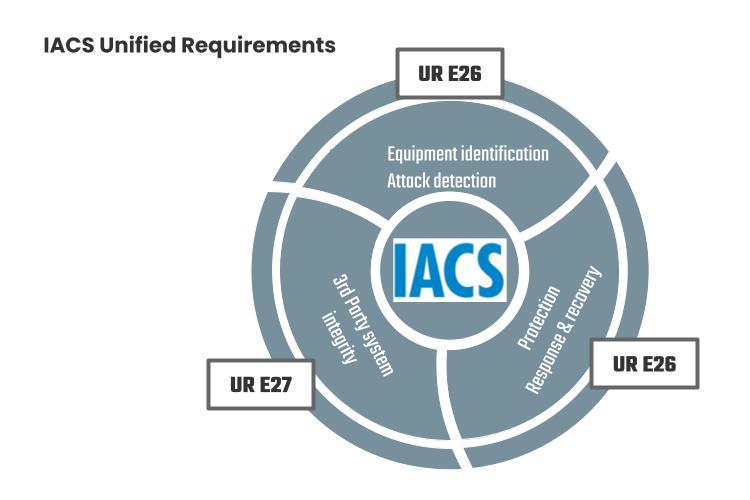IACS UR (Unified Requirements) - Overview
IACS UR (Unified Requirements) are mandatory technical standards
IACS UR (Unified Requirements) are mandatory technical standards established by the International Association of Classification Societies (IACS) to ensure uniformity in classification rules among member societies.
These requirements supplement IMO regulations and industry standards by defining the minimum technical criteria that classification societies must apply when inspecting, certifying, and approving the design, construction, and maintenance of ships and offshore structures.
Key Features of IACS UR
- Mandatory Compliance: All IACS member classification societies must incorporate URs into their own rules.
- IMO Alignment: URs complement IMO conventions such as SOLAS, MARPOL, and the IGC Code by providing detailed technical requirements.
- Regular Updates: IACS URs are continuously revised to reflect technological advancements, accident analyses, and industry needs.
- Diverse Coverage: URs cover various aspects of shipbuilding, including hull structure, machinery, electrical systems, and cybersecurity.
Main Categories of IACS UR
| Category | Description |
|---|---|
| UR A (General) | General requirements (survey procedures, classification rules, etc.) |
| UR B (Hull) | Hull structure and strength |
| UR C (Machinery) | Machinery systems (engines, propulsion, etc.) |
| UR D (Electrical & Control Systems) | Electrical and control systems |
| UR E (Materials) | Materials and welding requirements |
| UR F (Fire Protection) | Fire safety and protection |
| UR G (Load Line & Stability) | Load line and stability requirements |
| UR H (Hull Girder Strength) | Structural strength of hull girders |
| UR I (Polar Class Ships) | Requirements for ships operating in polar regions |
| UR M (Propulsion & Power Transmission) | Propulsion and power transmission systems |
| UR S (Ship Structures) | Structural design and construction of ships |
| UR Z (Survey & Certification) | Inspection and certification procedures |
Notable IACS UR Examples
UR S – Structural Strength and Design Standards
- Example: UR S21 (General structural strength assessment for ships)
UR E10 – Environmental Testing Requirements for Electrical and Electronic Equipment
- Defines reliability criteria for onboard electrical equipment under harsh marine conditions
UR M44 – Reliability and Maintenance Requirements for Ship Propulsion Systems
- Ensures the safety and operational integrity of propulsion and engine systems
UR E26/E27 – Cyber Resilience Requirements for Ships
- UR E26: Cyber resilience standards for ship systems
- UR E27: Cybersecurity measures for onboard equipment and control systems
Cyber requirements
1. UR E10 – Environmental Testing for Electrical and Electronic Equipment
- Specifies environmental test requirements for electrical and electronic equipment installed on ships and offshore structures.
- Based on IEC 60092 and IEC 60945 standards.
- Covers vibration, shock, temperature, humidity, insulation resistance, and electromagnetic compatibility (EMC) testing.
2. UR E22 – Onboard Use and Application of Computer-based Systems
- Provides guidelines for the design, installation, and operation of computer-based systems (CBS) on ships and offshore units.
- Addresses reliability, security, and maintainability of CBS.
- Differentiates between safety-critical and non-safety-critical systems for specific application requirements.
3. UR E26 – Cyber Resilience of Ships
- Defines cybersecurity risk management requirements for ships.
- Incorporates IMO MSC-FAL.1/Circ.3 (Guidelines on Maritime Cyber Risk Management).
- Focuses on cybersecurity assessment and protection measures for navigation, communication, propulsion, and cargo systems.
4. UR E27 – Cyber Resilience of Onboard Systems and Equipment
- Establishes cybersecurity requirements for specific onboard systems and equipment.
- Covers cybersecurity measures during system design, development, testing, and maintenance.
- Key areas: authentication, integrity, access control, and patch management.
These Unified Requirements (URs) are mandatory for IACS member classification societies and align with IMO regulations to enhance maritime safety and cybersecurity.

Comments
Post a Comment